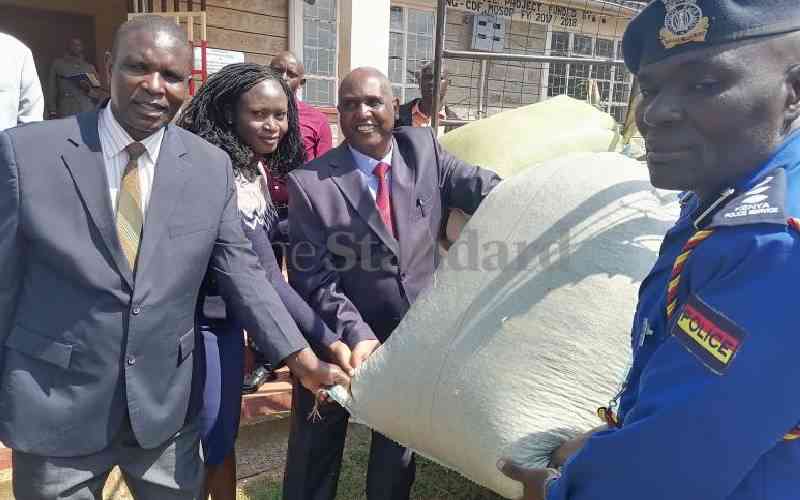By Gatonye Gathura
Kenya: One of the most destructive maize pests – the stalk borer – has figured out a way of safely feeding on genetically modified crops even when farmers apply recently recommended strategies in managing the new generation of hard-to-kill insects.
Researchers at the Nairobi-based International Centre for Insect Physiology and Ecology (Icipe) and North-West University, South Africa, say the moth is developing resistance even where farmers have introduced alternative crops in a strategy called refugia.
Refugia means planting alternative non-GM crops alongside the modified maize in a strategy that breaks the reproduction cycle of the insect. Kenyan farmers in Western Kenya are already being trained on how to use the strategy in readiness for the introduction of Bt maize around 2017.
Talking to The Standard on Monday, Dr Rémy Pasquet of Icipe said scientists have been alarmed by how fast resistance has spread in South Africa in a period of about five years while it took almost 15 years to acquire some moderate resistance in the US.
“The resistant pest has spread like wild fire in South Africa and now we are trying to understand how it managed to do so despite farmers observing the recommended insect management strategies.”
Three generations
The Icipe scientists also affiliated to other universities in the US and France collected stem borers from Kenya, reared them in the laboratory for three generations and sent them for experimentation to South Africa.
Dr Pasquet and his team suspect the local variant of stem borers also found in South Africa could have a different mechanism for protecting themselves against the poison from the Bt maize than those found in other parts of the world.
This could have serious lessons for Kenya, which plans to commercialise GMO maize by 2017. Such would include introducing newer maize varieties than those that are currently been tested in the country and possibly modifying the refugia strategy.
The modified maize carries in it the genes of a bacteria that lives in the soil called Bacillus thuringiensis, hence the name Bt maize.
The bacteria produces some poisons or toxins which kill several types of destructive pests, including the stem borer, which destroys an estimated 400,000 metric tonnes, or 13.5 per cent of local harvest costing US$80 million annually.
 The Standard Group Plc is a
multi-media organization with investments in media platforms spanning newspaper
print operations, television, radio broadcasting, digital and online services. The
Standard Group is recognized as a leading multi-media house in Kenya with a key
influence in matters of national and international interest.
The Standard Group Plc is a
multi-media organization with investments in media platforms spanning newspaper
print operations, television, radio broadcasting, digital and online services. The
Standard Group is recognized as a leading multi-media house in Kenya with a key
influence in matters of national and international interest.
 The Standard Group Plc is a
multi-media organization with investments in media platforms spanning newspaper
print operations, television, radio broadcasting, digital and online services. The
Standard Group is recognized as a leading multi-media house in Kenya with a key
influence in matters of national and international interest.
The Standard Group Plc is a
multi-media organization with investments in media platforms spanning newspaper
print operations, television, radio broadcasting, digital and online services. The
Standard Group is recognized as a leading multi-media house in Kenya with a key
influence in matters of national and international interest.








